ArcGIS Pipeline Referencing has a variety of new and enhanced features at the ArcGIS Pro 3.1 and ArcGIS Enterprise 11.1 releases, including expanded event editing capabilities in ArcGIS Pro along with additional tools to improve route management within the system. Additionally, Pipeline Referencing functionality has been added to the ArcGIS Enterprise sync service, opening the ability to do disconnected linear referencing system (LRS) event collection and updates in the field.
Event Editing in ArcGIS Pro
The following new tools for event editing are now available in ArcGIS Pipeline Referencing in ArcGIS Pro.
Event Replacement
The event replacement tool allows you to configure multiple LRS event layers that can be either retired or retired then replaced when an inline pipe replacement occurs within the system. Events configured to retire will retire if they’re located within the section of pipe being replaced. Events configured to retire and replace will be retired on the date of the replacement and a new record (with updated attributes) will be created.
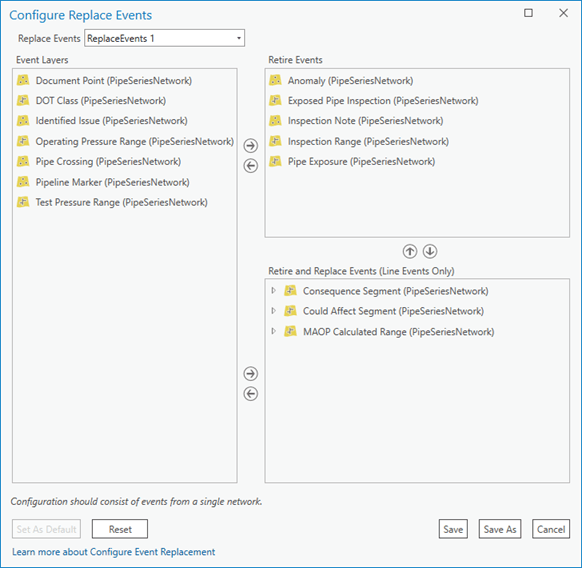
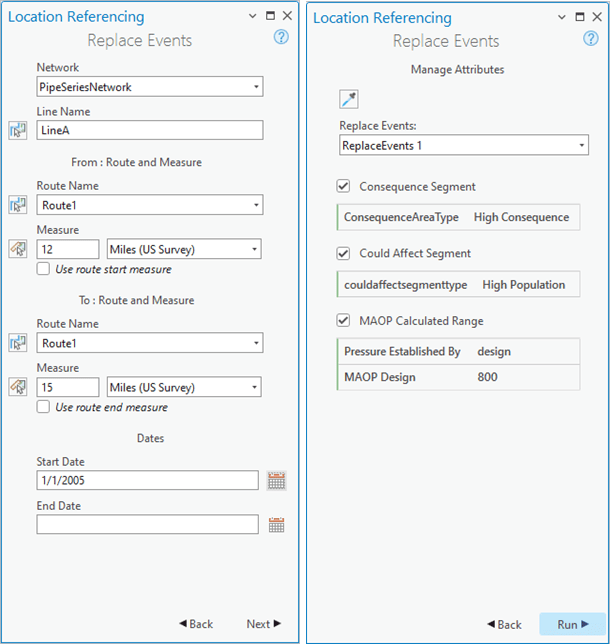
Merge Events
As pipe characteristics change over time, there are cases when the attributes of adjacent events are now the same and can be merged into a single event record to streamline the management of event data along that pipe. The merge events tool supports this workflow of two adjacent LRS event records being merged into a single record.
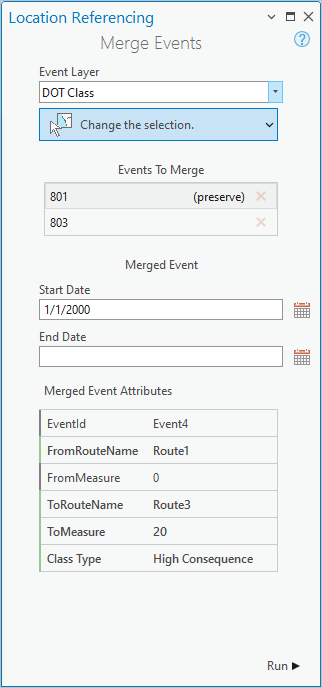
Editable Dynamic Segmentation
The Dynamic Segmentation tool allows you to dynamically segment multiple LRS events and visualize them in the map and in a table. The table is editable, allowing you to edit the attributes in the fields within the table. The resulting changes from those edits will be stored in the LRS event record(s) that contributed to the dynamic segmentation and are reflected in the updated dynamic segmentation table.

In addition, the following enhancements to existing event editing tools within ArcGIS Pro have been added.
Coordinate and Intersection Offset input methods
GIS professionals are responsible for getting event data (which can be in a variety of formats) into ArcGIS Pipeline Referencing. While route and measure/station may be the most common format, this data can also come in as coordinates or as offset from other features like intersections. The Add Point and Line Event tools in ArcGIS Pro have been enhanced to support these additional input methods for new event data coming into the system.
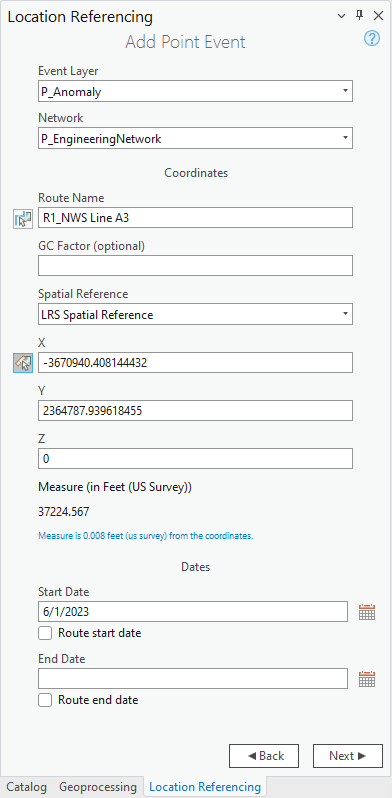
Retire Overlaps and Merge Coincident options
The Add Line Event tools have been enhanced to support options to retire overlaps and merge coincident events. Retire Overlaps will automatically retire existing events that would overlap in time and location with any newly added event created by the tool. Merge Coincident will consider any adjacent events that share the same attributes as the event being added and will automatically merge them into a single event to prevent unnecessary segmentation of event data.
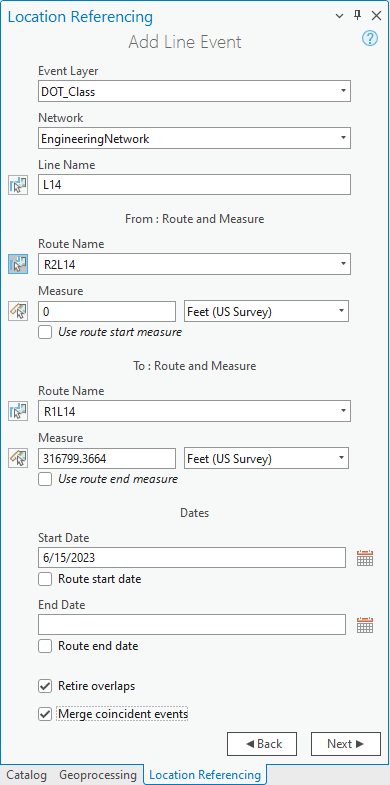
Eyedropper tool to copy attributes from adjacent events
When adding multiple point or line events to a route, many of the attributes could be the same as other event records that already exist on the pipe. When adding events that have multiple attributes, you can use the eyedropper tool to copy attributes from another event on the map to simplify the entry of multiple attributes.
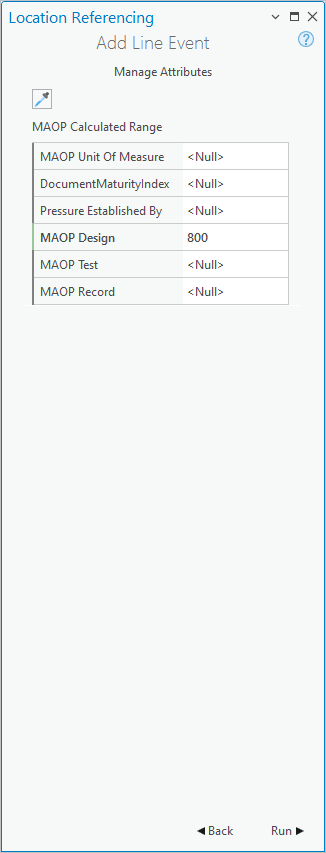
Additional ArcGIS Pro tools
We’ve added new tools to improve the user experience going between Route Name and RouteID fields and a new tool to support renaming routes within the system.
Translate tool
The new translate tool allows you to quickly translate between RouteID and Route Name or LineID and Line Name fields and copy those values for use in other tools within ArcGIS Pro. Additionally, you can translate measures between routes that are coincident or intersections within any LRS Network.
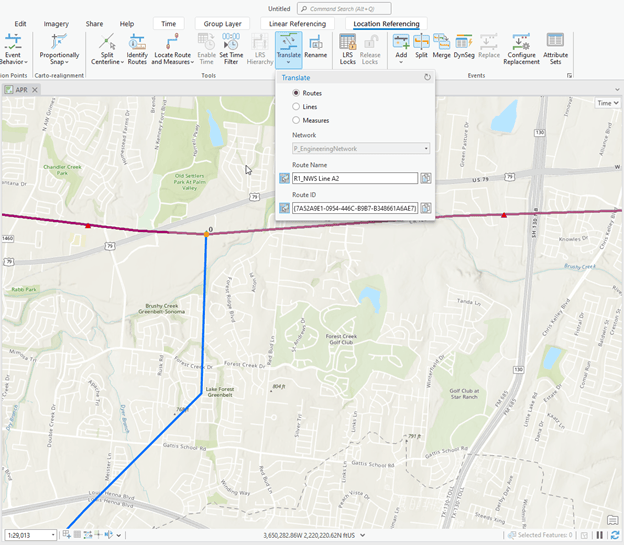
Rename Route tool
The rename route tool is designed to support updating the Route Name or Line Name on a route (or routes) that are already within your LRS and are managed by ArcGIS Pipeline Referencing. When a route is renamed using the tool, all the time slices of the route are updated to the new Route Name. Any events located on the route with the same Route Name will also be updated to maintain their association with the route they’re located on. When a line is renamed, all the routes on that line will have their Line Name updated as well as the Route Name for any derived network routes created from the line.
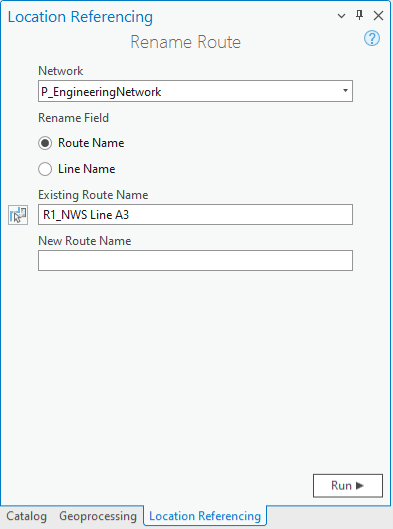
ArcGIS Enterprise
LRS support in the sync service capability
LRS support has been added to the sync service capability with the 11.1 release of ArcGIS Enterprise. This allows LRS events to be taken offline for collection and updating using ArcGIS Field Maps. Once you finish the collection and update of events and return to connectivity, you can sync the events back into the current version of the LRS using the sync button in Field Maps. ArcGIS Pipeline Referencing will ensure that any time slicing or event behaviors are applied to events that were collected against routes that changed in the LRS while offline collection/update was completed.



Article Discussion: